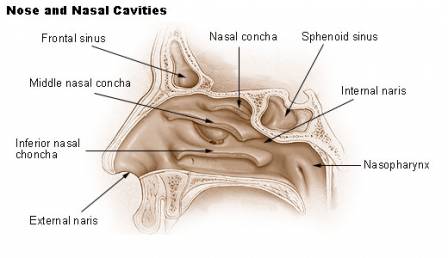We’ve all experienced that uncomfortable feeling of dried blood in our nose. It’s not a pleasant sensation, but it’s actually a common occurrence. Whether it’s due to dry air, nose picking, or a respiratory infection, the presence of dried blood in the nose can be bothersome.
We’ll explore the causes of dried blood in the nose and discuss effective ways to prevent it. So, if you’re tired of dealing with this pesky issue, keep reading to find out how to keep your nose happy and blood-free.
What causes dried blood in the nose?
Dried blood in the nose, also known as nasal crusting, can be caused by several factors. Here are some common causes:
- Dry air: Dry air can cause the nasal lining to become dry and cracked, leading to the formation of crusts and dried blood.
- Nasal irritation: Allergies, sinus infections, and nasal congestion can cause inflammation and irritation in the nasal passages, resulting in the formation of dried blood.
- Nosebleeds: Frequent nosebleeds can lead to the accumulation of dried blood in the nose.
- Nose picking: Picking the nose can cause small injuries to the nasal lining, leading to bleeding and the formation of dried blood.
- Trauma or injury: Any trauma or injury to the nose, such as a blow or a fracture, can result in dried blood in the nose.
It’s important to note that if you experience frequent or severe nosebleeds or have other concerning symptoms, it’s recommended to consult a healthcare professional for a proper diagnosis and treatment.
Common symptoms and signs of dried blood in the nose
Significant symptoms and signs of dried blood in the nose include:
- Nasal Obstruction: The presence of dried blood in the nose can cause a sensation of blocked nasal passages, making it difficult to breathe through the nose.
- Crusting: Dried blood inside the nose can form crusts or scabs, leading to discomfort and irritation.
- Nosebleeds: Frequent nosebleeds or recurrent episodes of bleeding from the nose can indicate dried blood present in the nasal cavity.
- Dryness and Itching: Dried blood can cause dryness and itching inside the nose, leading to discomfort and a constant urge to scratch.
- Nasal Discharge: In some cases, dried blood may mix with nasal mucus, resulting in the discharge of colored mucus from the nose.
- Bad Breath: Dried blood can give rise to an unpleasant odor, leading to bad breath.
- Nasal Pain or Tenderness: If the dried blood has caused irritation or inflammation, it can lead to pain or tenderness in the nasal passages.
It’s important to note that if you experience frequent or severe nosebleeds or have concerns about dried blood in your nose, it’s best to consult a healthcare professional for a proper evaluation and diagnosis.
Potential complications and when to see a doctor
While dried blood in the nose is often a harmless condition, there are potential complications that may arise, and it’s important to know when to seek medical attention.
One potential complication is recurring nosebleeds, which can lead to blood loss and anemia if left untreated. Chronic nosebleeds may also indicate an underlying medical condition such as an inflammatory disease, high blood pressure, or a blood clotting disorder.
Another complication is the development of a nasal infection. When blood sits in the nasal passages for a prolonged period, bacteria can multiply and cause an infection. Symptoms of a nasal infection may include persistent nasal discharge, pain, swelling, and fever.
If you experience any of the following symptoms, it is advisable to consult a healthcare professional:
- Frequent and recurring nosebleeds
- Excessive bleeding that does not stop within 20 minutes
- Difficulty breathing or swallowing
- Severe pain or swelling in the nose
- Signs of infection such as pus, foul odor, or fever
Remember, a healthcare professional can provide a proper diagnosis and recommend appropriate treatment options to address any potential complications.
How to treat and prevent dried blood in the nose
When it comes to treating and preventing dried blood in the nose, there are several steps you can take to alleviate the symptoms and reduce the occurrence:
- Keep the nasal passages moisturized: Dry air is a common cause of dried blood in the nose. Using a saline nasal spray or applying a thin layer of petroleum jelly inside the nostrils can help keep the nasal passages moisturized and prevent drying.
- Use a humidifier: Using a humidifier in your bedroom or other living areas can add moisture to the air and prevent dryness in the nose.
- Avoid picking or blowing the nose forcefully: Picking the nose or blowing the nose forcefully can irritate the delicate tissues inside the nostrils and lead to dried blood. Instead, gently blow the nose if necessary and avoid inserting any objects into the nostrils.
- Stay hydrated: Drinking an adequate amount of water can help prevent dehydration, which can dry out the nasal passages. Aim to drink at least 8 glasses of water per day.
- Avoid irritants: Avoiding exposure to irritants, such as cigarette smoke, allergens, or pollutants, can help reduce nasal irritation and prevent dried blood.
- Treat underlying conditions: If dried blood in the nose is a recurring problem, it may be linked to an underlying condition such as allergies, sinusitis, or nasal polyps. Treating and managing these conditions can help prevent further episodes of dried blood.
Remember, if the dried blood in the nose persists or is accompanied by other concerning symptoms such as persistent nosebleeds, difficulty breathing, or severe pain, it is important to seek medical attention. Your healthcare provider can evaluate your symptoms, identify any underlying causes, and recommend appropriate treatment options.
Home remedies for dried blood in the nose
If you experience dried blood in your nose, there are several home remedies that can help alleviate the symptoms and promote healing:
- Keep the nasal passages hydrated: Dry air can irritate the nasal passages and lead to nosebleeds. Use a saline nasal spray to moisturize the inside of your nose and prevent dryness.
- Use a humidifier: Adding moisture to the air in your home can help prevent nasal dryness. Use a humidifier, especially during the winter months when the air tends to be drier.
- Apply a nasal ointment: Applying a thin layer of petroleum jelly or an antibiotic ointment to the inside of your nostrils can help moisturize and protect the nasal passages.
- Avoid picking your nose: Picking your nose can further irritate the delicate blood vessels in your nose and increase the risk of nosebleeds. Keep your nails short and resist the urge to pick or blow your nose forcefully.
- Use a saline rinse: Gently rinsing your nasal passages with a saline solution can help remove dried blood and keep your nasal passages clean.
- Stay hydrated: Drink plenty of water to stay hydrated and prevent nasal dryness.
- Avoid irritants: Avoid exposure to irritants such as smoke, dust, and strong odors, as they can further irritate the nasal passages.
If these home remedies do not provide relief or if you experience frequent or prolonged nosebleeds, it is recommended to consult a healthcare professional for further evaluation and treatment.







